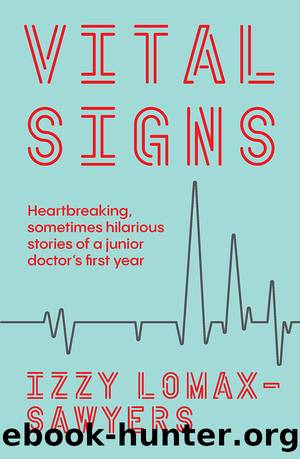Vital Signs by Izzy Lomax-Sawyers

Author:Izzy Lomax-Sawyers
Language: eng
Format: epub
Publisher: Allen & Unwin
Published: 2022-07-26T00:00:00+00:00
Life
AS A JUNIOR doctor your life (or lack of a life) is dictated to you by the RMO unit (RMO stands for resident medical officer). The RMO unit manages the start paperwork, phones and tablets, rostering, sick calls and leave allocations of all the junior doctors in the hospital, as well as being a general first port of call for our gripes and questions.
A bad RMO unit makes life as a junior doctor impossible, or rather, they make it impossible to have a life as a junior doctor. Horror stories are whispered on the junior doctor networks of leave requests for doctorsâ own weddings, put in a year in advance, declined without recourse.
A friend of a friend reportedly overheard a staff member at an RMO unit training a new colleague, sharing the wisdom that âyou canât think of them as peopleâ.
The staff in RMO units spend all day dealing with stressed, highly strung, type-A doctors, trying to convince us to work extra shifts to fill gaps in the roster. I am sure they are paid less than we are, and must roll their eyes a little when we try to negotiate a higher hourly rate for picking up a shift. I donât envy them the job.
A good RMO unit can make life easier for junior doctors. They arrange cover when we want to take leave so that our team isnât left in the lurch. They manage the resource of short-notice relievers who help out when a department is understaffed due to sick calls. They process our claims for additional pay when we pick up extra shifts, and our claims for public holiday pay and time in lieu.
The best ones even notice when someone is going to be the only house officer on a busy post-acute ward round, and recruit extra helpers from quieter parts of the service.
People generally suggest taking a week or two of annual leave every run to avoid fatigue. We are entitled to six weeks of annual leave a year, along with 30 days of sick leave. Like new parents with kids in daycare, new doctors get sick all the time. We are exposed to every lurgy circulating through the community. Even so, I have never met a doctor who came even close to using those 30 days of sick leave; before COVID, doctors generally worked through minor illnesses, and it is only the risk of transmitting COVID to patients that keeps us at home now. I think I have taken about five days off sick, almost all of them because I was waiting for PCR test results.
Between the long hours and the exhaustion, itâs easy to become totally absorbed by medicine, especially when you are just starting out. Real life falls by the wayside. Exercise, hobbies and catching up with family and friends all give way to early ward rounds, late finishes, night shifts and double long-day weekends.
Like most new doctors, I find it hard to set a firm boundary around my personal life. I take on extra shifts when my department is desperate for cover.
Download
This site does not store any files on its server. We only index and link to content provided by other sites. Please contact the content providers to delete copyright contents if any and email us, we'll remove relevant links or contents immediately.
So Young, So Sad, So Listen: A Parents' Guide to Depression in Children and Young People by Philip Graham Nick Midgley(547)
Vital Signs by Izzy Lomax-Sawyers(453)
Wilderness and Survival Medicine by Ellis Chris Breen & Dr Craig(297)
Case Studies in Adult Intensive Care Medicine by Daniele Bryden(290)
Eating and Growth Disorders in Infants and Children by Joseph L. Woolston(289)
Boxed Set 1 Dermatology by Dr Miriam Kinai(272)
Manufacturing Social Distress by Robert W. Rieber(257)
Data Analysis in Sport by O'Donoghue Peter Holmes Lucy(231)
Vision and Perception by Howard Burton(222)
Yoga by Seber Isaiah(213)
Neuroradiology - Expect the Unexpected by Martina Špero & Hrvoje Vavro(208)
A History of Neuropsychology by J.Bogousslavsky & F. Boller & M.Iwata(204)
Complications in Vascular and Endovascular Surgery by Earnshaw Jonothan J;Wyatt Michael G;(198)
Manufacturing social distress : psychopathy in everyday life by Robert W. Rieber(197)
Basic and Advanced Laboratory Techniques in Histopathology and Cytology by Pranab Dey(195)
The Psychology of Enhancing Human Performance by Gardner Frank L.;Moore Zella E.;(191)
Qigong Massage for Your Child with Autism by Anita Cignolini(188)
A Patient's Guide to Cataract Surgery: Normal and LASIK Reshaped Cornea by Unknown(188)
The Liferaft Survival Guide by Howorth Michael;Howorth Frances;(188)
